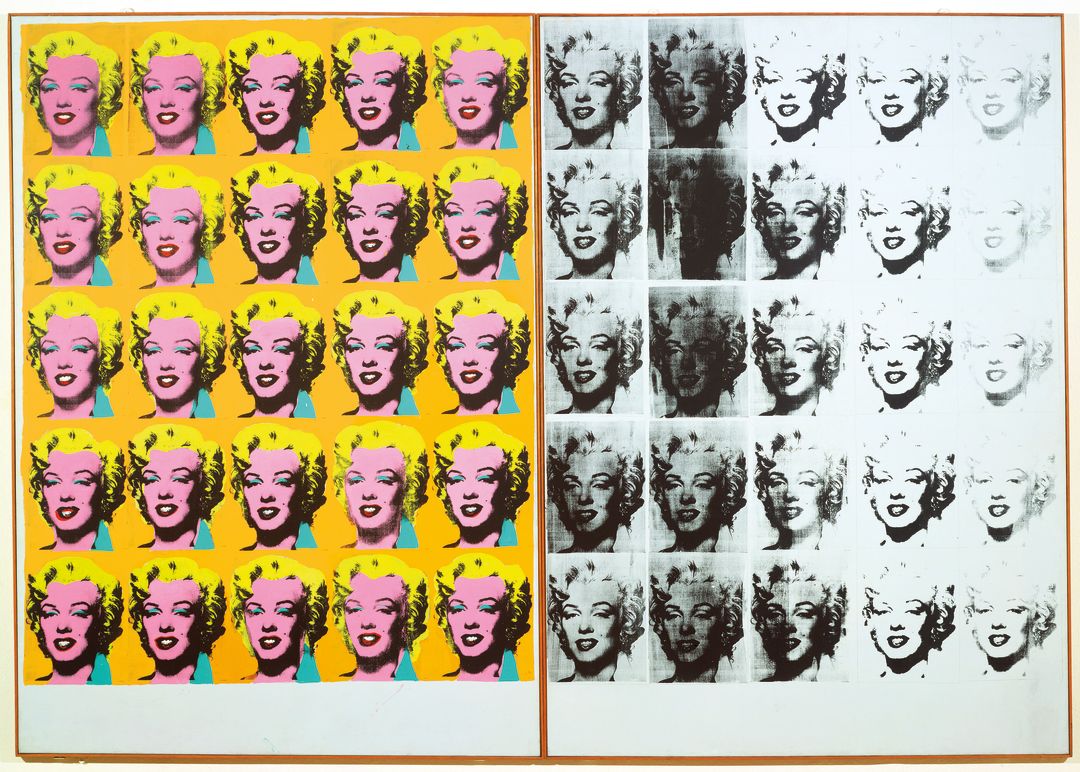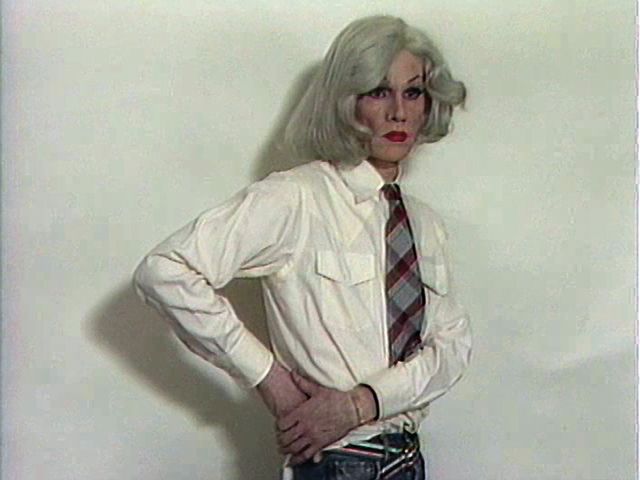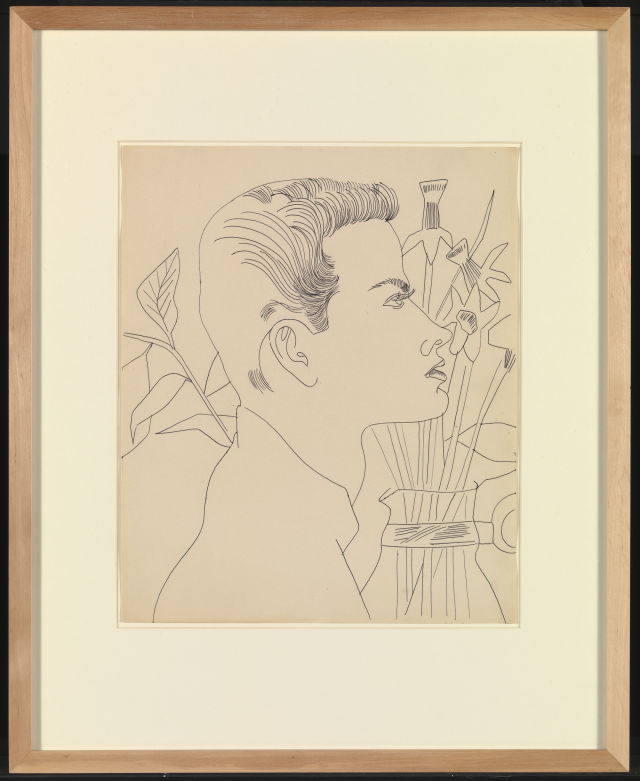Aspen Arts Orgs Collaborate for a Winter of Warhol

Marilyn Diptych, 1962
Acrylic, silkscreen ink and pencil
Image: Aspen Art Museum
Not long after discovering Aspen in the early 1960s, John and Kimiko Powers, with other art-world power couples, founded the Aspen Institute for Contemporary Art. From 1965 to 1970, the institute sponsored an artist-in-residence program, inviting the world’s most-celebrated Pop Art stars—including Carl Andre, Christo, Roy Lichtenstein, Robert Rauschenberg, and Andy Warhol—to summer in Aspen in studio space on the second floor of what is now the Brand Building.
During that time, the Powerses, devoted collectors of Warhol’s work, cemented what would become a lifelong friendship with the Pop Art icon, who became a frequent visitor to their 460-acre ranch in Carbondale, now home to the Powers Art Center and one of the world’s most comprehensive private collections of contemporary Pop Art. “When Andy visited the Powerses in Carbondale, he always wanted to go to Aspen to see ‘the famous people,’” says Powers Art Center director Melissa English. “Even though he was probably the most famous one in the group.”

Self-portrait in Drag, 1981
Polaroid dye diffusion print
Image: Aspen Art Museum
John Powers, a former publishing executive who first met Warhol at his New York studio when the artist was still relatively unknown, gave Warhol one of his first commissions: a portrait of his wife, Kimiko, who became a frequent, and favorite, subject. “Andy was very taken by her classic Japanese style and painted over 25 canvas portraits of her,” says English. “Once he said, in that soft voice of his, ‘I tried to sell Kimiko an invisible dress, but she wouldn’t buy it,’” she laughs. “They were very close.”
“He often gave them gifts; some were signed ‘Merry Christmas Kimiko, love Andy’ on the reverse,” she adds. “When Warhol was at the house, he would just pick up and sign all sorts of everyday objects: salt and pepper shakers, trash cans, pillows, cocktail glasses. Some of these pieces will be on display.”
Warhol in Colorado: The Artist’s Relationship with John and Kimiko Powers, a Powers Art Center exhibition that runs through the end of April, highlights the artist’s unique relationship with his collectors, including classic works on paper as well as works being exhibited here for the first time.
“In examining their relationship, we learn a lot about the artist as a person, so the show will be very personal,” explains Sonya Taylor Moore, the Powers Art Center’s director of programming and outreach. “When you think of Pop Art, you think of Andy Warhol. He was producing an insane amount of work, and yes, he was super commercial. His energy is wild and fun: when you see his work, you can’t help but smile.” Part of the fun of the exhibition includes “15 Minutes of Fame,” an immersive, hands-on experience where guests use prints of iconic images to create Warhol-style self-portraits.
In partnership with Powers Art Center, the Aspen Art Museum’s Andy Warhol: Lifetimes exhibition examines the artist’s life and work from a wider perspective, showcasing lesser-seen work alongside iconic images and archival material from Warhol’s lived experience. The effect is to provide an intimate look at the hidden persona of the artist, a shy gay man who was the son of immigrants. To that end, the museum invited artist Monica Majoli, an LGBTQ painter from California whose work explores how homosexuality has been seen historically, to reconceptualize the exhibition from previous stagings at the Tate Modern in London, the Museum Ludwig in Cologne, and the Art Gallery of Ontario in Toronto.

Boy with Flowers, 1955–57
Ink on paper
Image: Aspen Art Museum
“We feel fortunate to host this exhibition as the sole United States venue in a place that Andy Warhol loved and [where he] spent a lot of time,” says Aspen Art Museum assistant curator Simone Krug. “Beyond the queer lens, this exhibition covers so many themes, from the Pop Art movement to contemporary communication and social media. Warhol encapsulates so much as a cultural figure ... and we are excited to explore his rich history.”
Much of which happened here. Warhol returned often to ski Snowmass and memorably celebrated New Year’s Eve in 1981 at Andre’s Disco, a nightclub he compared to Studio 54. Eventually, he cemented his ties to the valley by purchasing 70 acres in Missouri Heights, on the mesa above El Jebel, and a home in Aspen, properties that were sold after his death in 1987. He left a visual record of his time here in many casual photographs of iconic Aspen places including The Little Nell, Hotel Jerome, Sardy Field, Snowbunny Lane, and the Rio Grande Trail.
Always fascinated by new media, Warhol also guest-edited the 1966 Pop Art edition of a short-lived, locally published avant-garde zine: ASPEN: The Magazine in a Box (available on Amazon for $22,500). True to its name, the zine shipped in bright-lettered cardboard packaging resembling a box of laundry detergent and, as its publisher explained, was dedicated to “one of the few places in America where you can lead a well-rounded, eclectic life of visual, physical, and mental splendor.”
No wonder it was a place where Warhol felt very much at home.
Andy Warhol: Lifetimes
Tue–Sun, 10 a.m.–6 p.m. through March 27
Aspen Art Museum
637 E Hyman Ave, Aspen
970-925-8050, aspenartmuseum.org
Warhol in Colorado: The Artist’s Relationship with John and Kimiko Powers
Tue–Fri 11 a.m.–4 p.m., last Saturdays 11 a.m.–3 p.m., through October 15
Powers Art Center
13110 Hwy 82, Carbondale
970-963-4445, powersartcenter.org













































